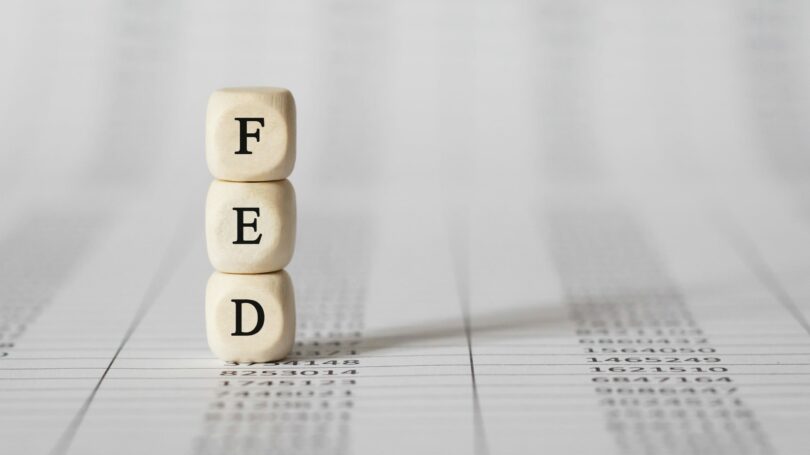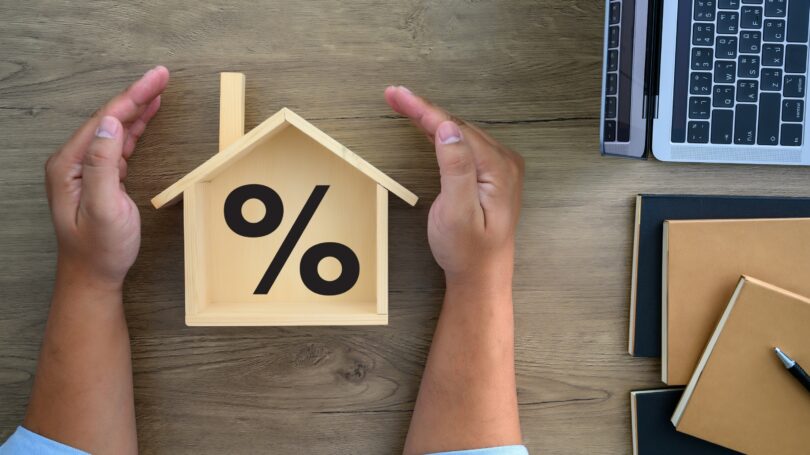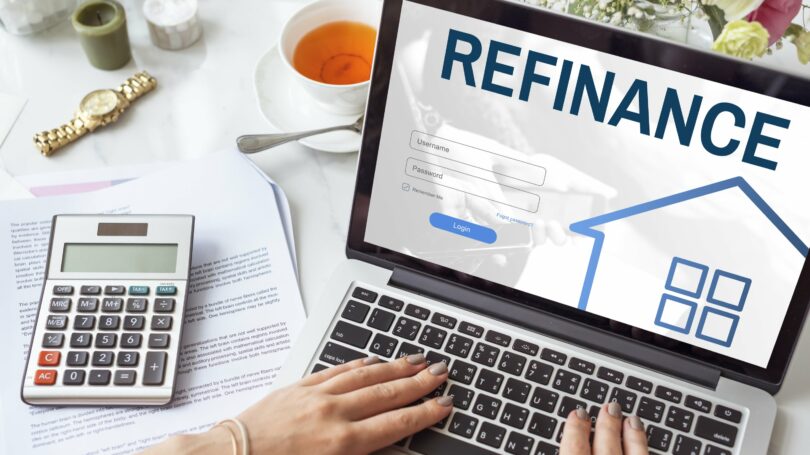In March 2020, the Federal Reserve cut its benchmark interest rate by a full percentage point, dropping it to near zero and keeping it there throughout the COVID-19 pandemic.
That doesn’t mean consumers pay 0% interest rates on loans. However, interest rate changes do directly impact you and your wallet, and you need to understand how.
Consider this your crash course on how lower interest rates affect you — and what you can do to take advantage of them.
What Is the Federal Reserve’s Interest Rate?

When you hear that the Federal Reserve (“the Fed”) has cut rates, it means the Federal Open Market Committee (FOMC) has reduced the federal fund’s target rate.
The FOMC meets eight times per year to make policy decisions, including setting the target rate. The target rate (also known as the “federal funds rate” or “nominal rate”) is a guideline for banks that helps them determine what interest rate to charge each other for reserve loans.
Although each interbank loan is individually negotiated between the two banks involved, rates tend to hover pretty closely around the Fed’s target rate.
Why does it matter to you what banks charge each other?
The answer is simple: Banks typically base their interest rates and other pricing for consumer services on what they themselves pay. If they borrow money from another bank at 3% interest, you can expect they’ll charge you more than that when you borrow money from them.
One final rate worth mentioning is the prime rate. Generally, the prime rate is 300 basis points (3%) above the target rate. Thus, if the target rate is 1%, the prime rate is 4%. The prime rate is what banks charge their most creditworthy corporate clients when they borrow money.
Why the Fed Lowers or Raises Interest Rates

Many economic papers have been written on this topic. In general, the Fed lowers interest rates to stimulate the economy and increase inflation, and they raise interest rates to curb inflation and to prevent the economy from overheating.
When interest rates are low, it’s cheap for companies and consumers alike to borrow money. That spurs spending and investment, which creates an upward spiral of economic growth.
Imagine you own a small business you’ve been thinking about expanding by opening a new location. You’ve been nervous to overextend yourself, but interest rates drop so much that you can cheaply borrow the money you need to expand.
You buy a second location on the other side of town, spending money on the real estate transaction, renovations, hiring employees, and marketing. All of this creates work for other people, driving economic growth.
But if interest rates remain too low for too long, many companies and individuals end up overextending themselves. They spend too much money and take on too much debt. It’s unsustainable.
At a certain point, people and companies alike need to pull back, stop spending so much, and repay their bloating debts. Otherwise, they may default on them, which creates a ripple of damage across the economy.
Plus, all that loose money can cause rapid inflation. When everyone’s in a mood to buy, prices go up.
For a sense of historical context, here’s a graph from the Federal Reserve showing interest rates since 1955.
Finally, it’s worth mentioning that sometimes the Fed lowers interest rates for political reasons. In 2019, for example, President Trump publicly pressured Fed chairman Jerome Powell into lowering interest rates in a series of tweets and press quotes.
Ways Lower Interest Rates Affect You

Enough with economic theory. How do lower interest rates affect you and your wallet?
The target rate affects everything from debt interest rates to the returns investments offer. But as a consumer and individual investor, you should pay particular attention to these seven ways interest rates can impact your personal finances.
1. Cheaper Credit Card Offers
Credit card companies borrow money inexpensively, often from banks at or near the target rate. They then turn around and lend that money to you at dramatically higher interest rates.
The lower the target rate, the lower the interest rate they can offer you while keeping their profit spread the same. But as interest rates rise, the card company’s borrowing costs also rise, and they pass those costs on to consumers in the form of higher credit card interest rates and APR.
At any given moment, there are always low-APR credit cards and high-APR credit cards. But “low” and “high” are relative, and both move up and down along with the Fed’s target rate.
2. New Bonds Typically Pay Less, Existing Bonds Are Worth More
When interest rates go down, newly issued government bonds generally pay lower yields.
U.S. Treasury bonds are considered “safe” investments, so their prices are effectively the floor for returns. As bank interest rates rise and fall based on the Fed’s target rate, new Treasury bonds yields typically move similarly.
Where many new investors get confused is that as new bond yields rise or fall, it directly impacts the pricing of existing bonds too — but in the opposite direction. When new bond yields fall, existing bonds become more valuable.
Imagine you buy a government bond that pays 4%. Then interest rates fall, and newly issued government bonds start paying 3% instead.
Suddenly, your 4% bond looks a lot more valuable compared to the lower-yield 3% bonds the government currently offers. Now you can sell your existing bond on the open market for more than you paid for it and earn a profit.
Pro tip: If you’re looking to add bonds to your investment portfolio, Worthy allows you to invest in small businesses in exchange for a 5% return.
3. Cheaper Mortgages, Higher Home Prices
Contrary to popular belief, mortgage interest rates are more closely tied to the 10-Year Treasury yield than to the Fed’s target rate.
But as outlined above, the target rate impacts bond rates, and bond rates impact mortgage rates. So when the Fed lowers rates, mortgage interest rates usually go down too.
Cheaper mortgages mean borrowers pay less on a monthly basis for the same-priced home. For example, a 30-year mortgage for $300,000 costs borrowers $1,610 per month at 5% interest but only $1,347.13 per month at 3.5% interest.
Unfortunately, that also means home prices tend to rise when interest rates fall. Most buyers take out a mortgage, so how much house they can afford is determined by the monthly payment, not the overall price.
A homebuyer who can afford a $1,610 mortgage payment can afford to buy a $300,000 home at a 5% interest rate or a $359,000 home at a 3.5% interest rate.
When interest rates are lower, buyers can afford to make higher offers, which in turn drives up home values.
Some mortgages, called adjustable-rate mortgages (ARMs), have interest rates that rise or fall based directly on other rates, such as the rate paid by Treasury bills. That means that rates rising and falling doesn’t just affect new homebuyers and refinancers, but also many homeowners’ month-to-month payments.
4. Cheaper HELOC Rates
Similarly, interest rates on home equity lines of credit (HELOCs) from companies like Figure.com adjust up and down based on standardized rates. If you have a HELOC against your home and interest rates drop, you can normally expect to pay less for your HELOC interest as well.
Because HELOCs are rotating lines of credit, many borrowers liken them to credit cards, except that they’re secured against your home.
It’s not a perfect analogy, as HELOCs make it easier to draw cash and, at a certain point, lock and revert to a fixed loan that must be repaid. But when it comes to interest rates impacting borrowing costs, the analogy holds. When rates rise or fall, it affects your cost to draw on your line of credit.
5. Cheaper Auto Loan Rates
Unlike mortgage rates, which are often tied to Treasury bond rates, auto loan rates are more often tied to the prime rate. As the Fed lowers the target rate, the prime rate follows suit, so auto loan rates typically drop quickly when the Fed cuts rates.
But like mortgage interest rates, borrowers can and should negotiate lower interest rates on car loans, regardless of the current prime rate. Shop around, haggle hard, and see if you can shave some extra interest off your auto loan.
6. Lower Interest Paid on Your Deposits
Whether you keep your savings in a high-yield savings account, a certificate of deposit (CD) account, or a money market account, the interest rate your bank pays you is likely tied in some way to the Fed’s target rate.
Sadly, that means you can expect to earn less interest on your liquid savings when rates go down.
Thankfully, you have more options than ever before to store your money in today’s world of online banking, making it easy to compare and shop for the highest-yield accounts. Even with rates around 0%, banks like CIT Bank offer great rates on their savings accounts.
And when interest rates go down, it stimulates the economy, which usually stimulates the stock market too.
7. Stock Market Stimulus
There’s a complex relationship between interest rates and stock prices.
On the most fundamental level, the Fed lowering interest rates sends a negative signal of no confidence in the economy. Many investors read interest rate cuts as a sign the economy needs stimulus, and they pull back on stocks.
The flip side is that stimulus usually works. Reducing interest rates helps shoot some adrenaline into the economy.
As outlined above, lower interest rates make it more affordable for companies to borrow money and expand. Sometimes investors get excited rather than nervous when they hear the Fed has lowered interest rates.
Adding to the complexity is the role of bond yields. When interest rates drop, so do bond yields, which makes bonds less attractive to investors. That sends many investors looking elsewhere for decent returns — and this usually means buying stocks.
Conversely, when bond yields rise, they attract many investors’ money away from stocks and toward the perceived safety of bonds.
How to Take Advantage of Dropping Interest Rates

Now that you grasp the fundamentals of how lower interest rates affect your wallet, how can you take advantage when interest rates drop?
First, keep in mind that just because it’s cheaper to borrow money, that doesn’t mean you should take on more debt. And just because banks pay less in interest on your savings, that doesn’t mean you should save any less.
The fundamentals of building wealth all still apply: Reduce your debts and increase your savings rate and investments.
That said, consider these tactics to come out ahead when interest rates drop.
Consider Selling Your Existing Bonds
As mentioned above, when new bond yields drop, existing bond prices rise. That means you can sell your existing bonds — which pay more than newly issued bonds after a rate cut — for more than what you paid for them.
Look over your bond portfolio, and check to see what your bonds are worth in today’s lower-rate environment. You may find that now’s a great time to sell some of those bonds and pocket the profits.
Unfortunately, when yields fall, it’s typically not a great time to buy bonds, unless you think rates are going to keep dropping.
Look to Stocks & Real Estate
Lower interest rates, as a stimulus for economic growth, can indicate an opportunity to buy stocks at prestimulus pricing.
Likewise, the effective cost to invest in real estate drops alongside mortgage interest rates. In the example above, the $300,000 property might as well have gone on sale, since a drop in interest rates caused the monthly payment to drop from $1,610 to $1,347.13.
The best part is that you can finance your investment properties with a fixed-interest mortgage. Even when rates go back up, you’ve locked in your low interest rate for the next 15 to 30 years.
Just be careful about spiking home prices. When interest rates fall, home prices tend to rise because buyers can afford to bid more.
Buy or Refinance a Home
Many factors go into the decision to rent or buy a home. When interest rates fall and your prospective monthly payment for a mortgage drops, it can tilt the balance in favor of buying over renting. After all, it’s not like your rent goes down just because interest rates drop.
One more reason to keep a high savings rate is so you have money for a down payment if you notice a good time to buy.
If you already own a home, dropping interest rates could make it advantageous to refinance your current mortgage. Just be careful.
Between closing costs, extending your debt horizon, and restarting your amortization schedule from scratch, refinancing is always more expensive than your loan officer makes it sound.
Pro tip: If refinancing your mortgage makes sense for your situation, start your search with Credible.com*. You’ll be able to compare prequalified rates from multiple lenders in just minutes.
Tier Your Emergency Fund
You don’t need to meekly accept the opportunity cost that comes with keeping your entire emergency fund in cash, accepting paltry interest rates. Structure your emergency fund in a tiered series of defenses like a medieval castle.
I keep some money in cash in a savings account as the first tier of my emergency fund. As a second tier, I usually keep some more cash in my brokerage account, ready to invest if I see a market opportunity.
For the next layer of defense, I keep some stable short-term investments, such as a short-term Treasury bill ETF. The returns are low, but it’s stable and pays more than my savings account.
Between my wife and I, we also have several unused credit cards we can access in a sudden emergency.
As a final defense, I have some relatively liquid but stable income-oriented ETFs. They’re high-dividend, low-volatility funds, which don’t fluctuate as much as standard stock market indexes. In a pinch, I could sell them without losing sleep.
If an emergency hits that you can’t cover with savings, you can fall back to the next layer of defense: an account that pays more than your savings account.
Transfer Your Credit Card Balance to a 0% Introductory APR Card
If you have a credit card balance you don’t pay in full every month, it’s time to eradicate it.
Fortunately, when interest rates are low, more credit card companies offer deals like 0% APR on balance transfers for the first 12 to 24 months. Find the best card you can with the longest 0% introductory APR period, and transfer your existing balances to it.
Then funnel all your savings into it each month until it’s paid in full. That way, you never have to pay a cent on credit card interest again.
Improve Your Credit to Take Advantage of Cheap Financing
When rates are low, loans are cheap — for borrowers with good credit, that is.
If your credit is less-than-stellar, now is as good a time as any to fix it. Begin the quest to improve your credit by paying off all credit card debt, but don’t stop there. Use the debt snowball method to wipe out all high-interest unsecured debt.
Make sure you run your own credit report to scour it for errors. The fastest way to improve your credit is to remove errors from your credit report. And millions of Americans have errors on their reports.
Once that’s done, sign up for Experian Boost. This free service can give your credit score an instant boost by factoring in your utility bills.
For consumers who simply haven’t established enough credit yet, start with a secured credit card, followed by a credit-builder loan like Self. The faster you build (or rebuild) your credit, the more you’ll be able to take advantage of cheap financing when interest rates are low.
Final Word
Low interest rates are not inherently good or bad; they simply create different opportunities than when rates are high.
At high interest rates, bonds can make safe, high-yield investments. At low interest rates, they often lose much of their luster.
Likewise, low interest rates make borrowing money cheap, which comes with its own risks and rewards. It can mean a lower monthly payment on a mortgage, but the same trait drives home prices higher. And cheap loans often tempt people to borrow more than they should.
Regardless of the interest rate environment, stick to the fundamentals of building wealth: Pay off unsecured debts, maximize your savings rate, and invest as much money as you can in tax-sheltered, diverse, high-yield investments.
Do that, and you’ll become wealthy no matter how the Fed sets its target rate.
*Advertisement from Credible Operations, Inc. NMLS 1681276. Address: 320 Blackwell St. Ste 200, Durham, NC, 27701